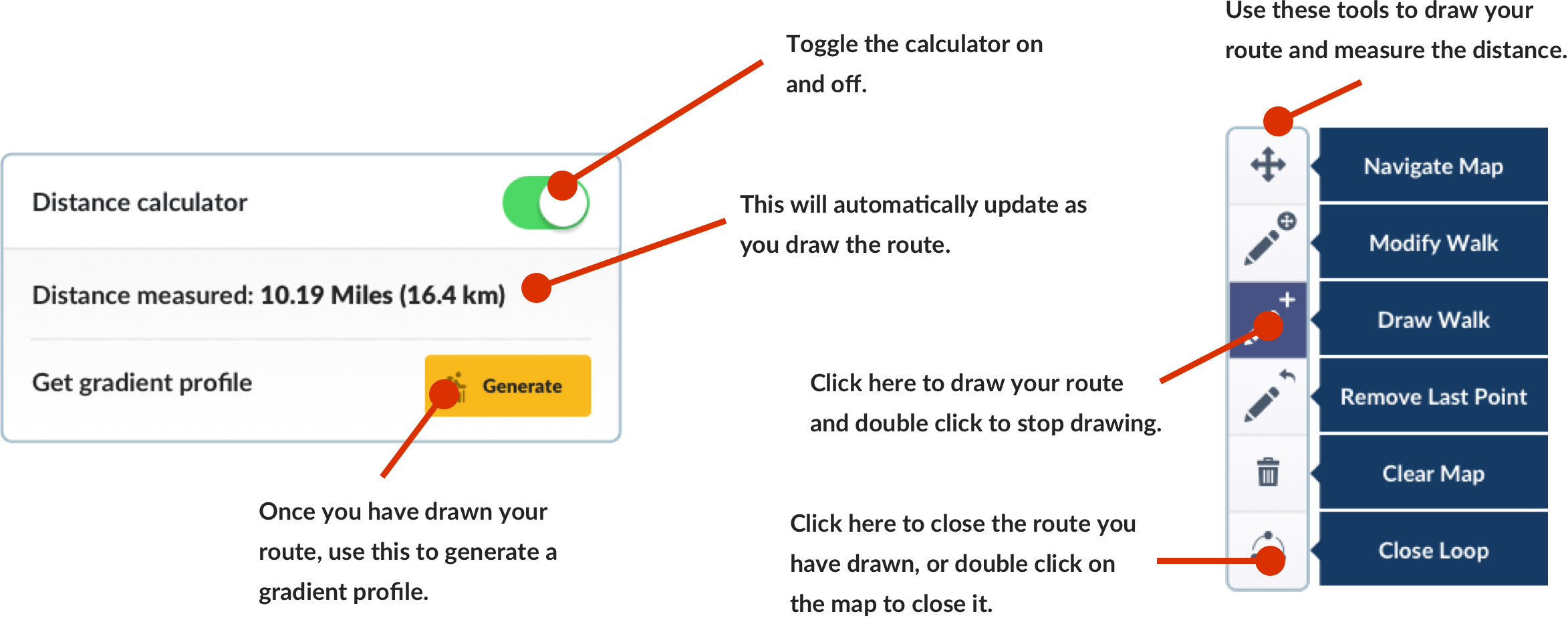Added to your Itinerary Planner below
Distance calculator
Map Filters

Customise your trip with our filters.
Map Filters

Toggle between the options below to show available markers.
General info Equestrian Info Cycling InfoAccommodation
Points of interest
Services
Routes
Accommodation
Points of interest
Transport
Accommodation
Points of interest
Transport
The custom route elevation is created when you use the distance calculator (above) to draw a line.
The custom route elevation is created when you use the distance calculator to draw a line.

This section of trail has been assessed to provide additional information which may help users to determine whether this route is suitable for them.
Brief description: This is a short out and back stroll of 1.5 miles along the escarpment of the Hambleton Hills from where there are distant views to the Yorkshire Dales. Leaving the Drove Road a grass track then leads to an outstanding view over hidden Thorodale.
August is a great time to walk this route when the heather is in full bloom.
Distance and duration: 1.5 miles / 2.4 km. At an average walking speed of 3mph this will take 30 minutes.
Difficulty: This route has been categorised by the North York Moors National Park Authority as a Miles Without Stiles route "For many". The grade is a guide only, so please weigh up your route choice carefully. A Miles Without Stiles For Many route:
- Is suitable for assisted wheelchair users and families with more robust, all-terrain type buggies
- Has existing gradients no more than 1:10, although newly built gradients can be up to 1:8
- The path surface will be rougher stone of 4 cm diameter or less
Start and end location: West of Kepwick, near Thirsk.
- Nat Grid SE489915
- What3Words buzzing.track.haunt
- Nearest Post Code YO7 2JU
Getting there
Kepwick is situated north-east of Thirsk.
Turn off the A19 at Knayton for Kepwick. At the west end of the village by the entrance to Kepwick Hall, take the road signed ‘Unsuitable for motors’ (It is ok for cars up to the parking point!). This is a steep, narrow, gated tarmac road which will take you to the start point of the walk.
There is space for a few cars where the road from Kepwick meets the Hambleton Drove Road.

Photo: Car parking at Hambleton Drove Road
Path surface:
The Drove Road is a stony track. At the start of this walk there is enough width to use either the close cropped grass alongside the track or the Drove Road. Where the route leaves the Drove Road it joins a grassy track. The route then passes through a bridlegate and is a narrower and rougher path for a short distance.
Path gradient:
- Ascent:
- Descent:
- Maximum gradient: Where the route leaves the Drove Road it joins a track, with a maximum gradient of 1:15 before levelling out.
- Highest point:
- Lowest point:
Turn-by-turn directions:
1 From the start point (where the road from Kepwick meets the Hambleton Drove Road) head north, descending gently along the Drove Road.

Photo: View along Hambleton Drove Road
2 On reaching the ruins of Lime Kiln House turn right onto the grassy track of the bridleway.

Photo: Stone marking the ruins of Limekiln House Inn
3 Pass through the gate on the left to follow the path a short distance to see the wonderful view over Thorodale.

Photo: Bridle gate
4 Return the same way to arrive back at the start point.

View across Thorodale
Nearest Facilities
There are no immediate facilities.
The closest are at Thirsk and Osmotherley where there are accessible toilets.
Points of Interest
The Hambleton Drove Road has been used for thousands of years. Along its length archaeologists have found flints, axes and pottery dating back to the stone age.
In the 18th Century the road was used by Scottish cattle drovers. They drove vast herds of cattle from Scotland across England to various market towns, even as far as London.
The walk also leads you down to the ruins of Limekiln House. This was once an Inn serving the drovers.
This is limestone country and evidence of stone quarries abound in the area. During the 19th century the stone was used extensively for mortar, limewash and agricultural lime as well as for building local dry stone walls.
Further north the limestone thins out and is replaced by grit and sandstone and the vegetation changes from grassland to heather moorland.
Download this Route
You can find this route and follow it on your Smartphone on the OutdoorActive website OutdoorActive (Hambleton Drove Road Accessible Walk)
